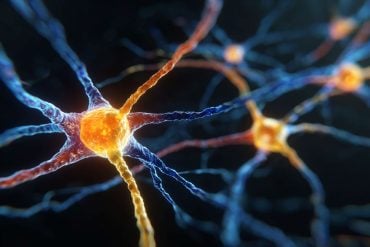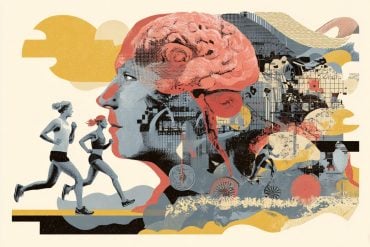Summary: Trigonelline (TG), a compound in coffee and certain vegetables, is believed to improve cognitive decline in aging. Researchers administered TG to aging mice, noting enhancements in spatial learning and memory.
Deep dives into the hippocampus found that TG bolstered neurotransmitters and curtailed inflammation. This natural compound holds potential in mitigating age-linked cognitive challenges.
Key Facts:
- Trigonelline (TG), found in coffee, fenugreek seed, and radish, significantly enhanced spatial learning and memory in aged mice.
- TG was discovered to support pathways tied to nervous system development, mitochondrial function, and neurotransmitter release.
- The compound also suppressed neuroinflammation and increased key neurotransmitter levels in the hippocampus.
Source: University of Tsukuba
The search for functional natural compounds that can improve age-related cognitive decline has recently emerged as an important research focus to promote healthy aging.
Trigonelline (TG), a plant alkaloid found in coffee, as well as in fenugreek seed and radish, was anticipated to possess cognitive enhancement properties.

In this study, researchers led by the University of Tsukuba investigated the effects of TG on memory and spatial learning (acquiring, retaining, structuring, and applying information related to the surrounding physical environment) from both a cognitive and molecular biology perspective in an integrated manner using a senescence-accelerated mouse prone 8 (SAMP8) model.
Following oral administration of TG to SAMP8 mice for 30 days, the Morris water maze test indicated a significant improvement in spatial learning and memory performance compared with SAMP8 mice that did not receive TG.
Next, the researchers performed whole-genome transcriptomic analysis of the hippocampus to explore the underlying molecular mechanisms. They found that signaling pathways related to nervous system development, mitochondrial function, ATP synthesis, inflammation, autophagy, and neurotransmitter release were significantly modulated in the TG group.
Furthermore, the research team found that TG suppressed neuroinflammation by negatively regulating signaling factor Traf6-mediated activation of the transcription factor NF-κB. Additionally, quantitative protein analysis confirmed that the levels of inflammatory cytokines TNF-α and IL-6 were significantly decreased and the levels of neurotransmitters dopamine, noradrenaline, and serotonin were significantly increased in the hippocampus.
These findings suggest the efficacy of TG in preventing and improving age-related spatial learning memory impairment.
Funding: This work was supported by DyDo DRINCO and Japan Science and Technology Agency (JST grant number JPMJPF2017).
About this memory research news
Author: YAMASHINA Naoko
Source: University of Tsukuba
Contact: YAMASHINA Naoko – University of Tsukuba
Image: The image is credited to Neuroscience News
Original Research: Open access.
“Transcriptomics and Biochemical Evidence of Trigonelline Ameliorating Learning and Memory Decline in the Senescence-Accelerated Mouse Prone 8 (SAMP8) Model by Suppressing Proinflammatory Cytokines and Elevating Neurotransmitter Release” by KAGAWA, Tamami et al. GeroScience
Abstract
Transcriptomics and Biochemical Evidence of Trigonelline Ameliorating Learning and Memory Decline in the Senescence-Accelerated Mouse Prone 8 (SAMP8) Model by Suppressing Proinflammatory Cytokines and Elevating Neurotransmitter Release
In recent years, exploring natural compounds with functional properties to ameliorate aging-associated cognitive decline has become a research priority to ensure healthy aging. In the present study, we investigated the effects of Trigonelline (TG), a plant alkaloid, on memory and spatial learning in 16-week-old senescence-accelerated mouse model SAMP8 using an integrated approach for cognitive and molecular biology aspects.
After 30 days of oral administration of TG at the dose of 5 mg/kg/day, the mice were trained in Morris Water Maze task. TG-treated SAMP8 mice exhibited significant improvement in the parameters of escape latency, distance moved, and annulus crossing index. Next, we performed a whole-genome transcriptome profiling of the mouse hippocampus using microarrays.
Gene ontology analyses showed that a wide range of biological processes, including nervous system development, mitochondrial function, ATP synthesis, and several signaling pathways related to inflammation, autophagy, and neurotransmitter release, were significantly enriched in TG-treated SAMP8 compared to nontreated. Further, a nonlinear dimensionality reduction technique, Uniform Manifold
Approximation and Projection (UMAP), was applied to identify clusters of functions that revealed TG primarily regulated pathways related to inflammation, followed by those involved in neurotransmitter release. In addition, a protein–protein interaction network analysis indicated that TG may exert its biological effects through negatively modulating Traf6-mediated NF-κB activation.
Finally, ELISA test showed that TG treatment significantly decreased proinflammatory cytokines- TNFα and IL6 and increased neurotransmitters- dopamine, noradrenaline, and serotonin in mouse hippocampus. Altogether, our integrated bio-cognitive approach highlights the potential of TG in alleviating age-related memory and spatial impairment.







